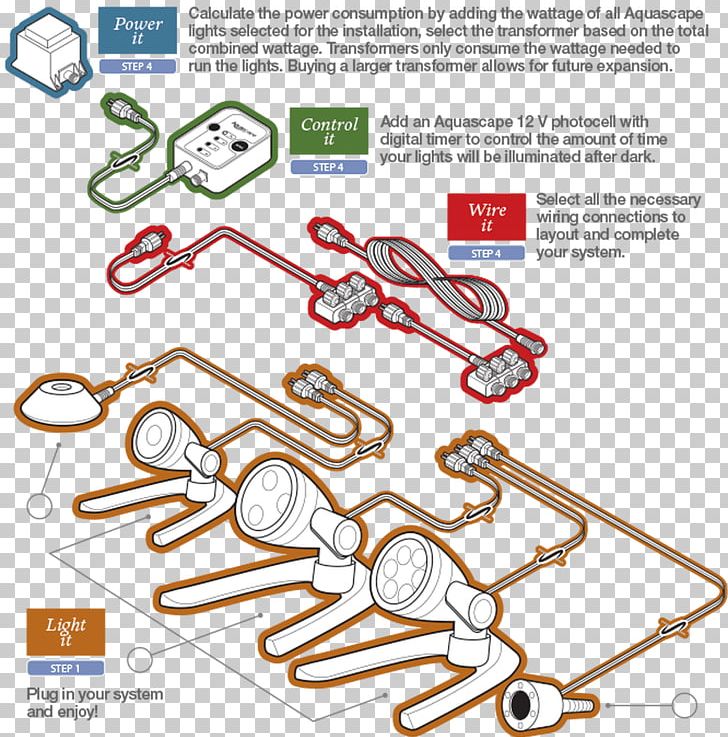Landscaping Lighting Wiring Diagram

This manual will take you through fixture choice bulb selection wire sizing fixture installation using the hub method transformer selection and a reference section.
Landscaping lighting wiring diagram. It shows the parts of the circuit as streamlined shapes and also the power as well as signal links between the gadgets. Outdoor led lighting transformer load voltage drop explained by total led malibu lighting duration. Voltage drop is one of the biggest concerns when it comes to wiring low voltage systems. A wiring diagram is a simplified conventional pictorial depiction of an electric circuit.
Click on the image to enlarge and then save it to your computer by right clicking on the image. This method requires equal lengths of wire on all fixtures leading to a central connection point a hub. Each lighting fixture contains a light source either an integrated built in led source or a replaceable lamp bulb. To determine where your wiring is located.
In any situation proper use of these techniques is imperative in order to provide the needed 115 volts to your fixtures and ensure wire amperage capacities are not exceeded. Total lighting supply 263038 views. Assortment of low voltage landscape lighting wiring diagram. The lamp could be the older incandescent usually halogen type or it could be an led lamp.
A good rule of thumb for selecting proper wire size is determining your wattage. Variety of landscape lighting wiring diagram. Voltage drop and wiring methods. Any system under 200 watts will be fine using 16 gauge wire.
These are of course the producers of light. 12 and 16 gauge. Wire sizing most low voltage landscape lighting wire comes in two different sizes. Line voltage landscape lights lovely low voltage outdoor lighting.
The only wiring method that can get equal voltage to every fixture is an equalized hub method of wiring. We used direct burial splice kits for this installation. Over 200 watts you should use a 12 gauge sized wire. The purpose of this manual is to provide you with a precise step by step method of designing and installing low voltage landscape lighting.
It is best to tackle corners and curves with straight lines and right angles hugging the edge of the garden or grass as much as possible.



















